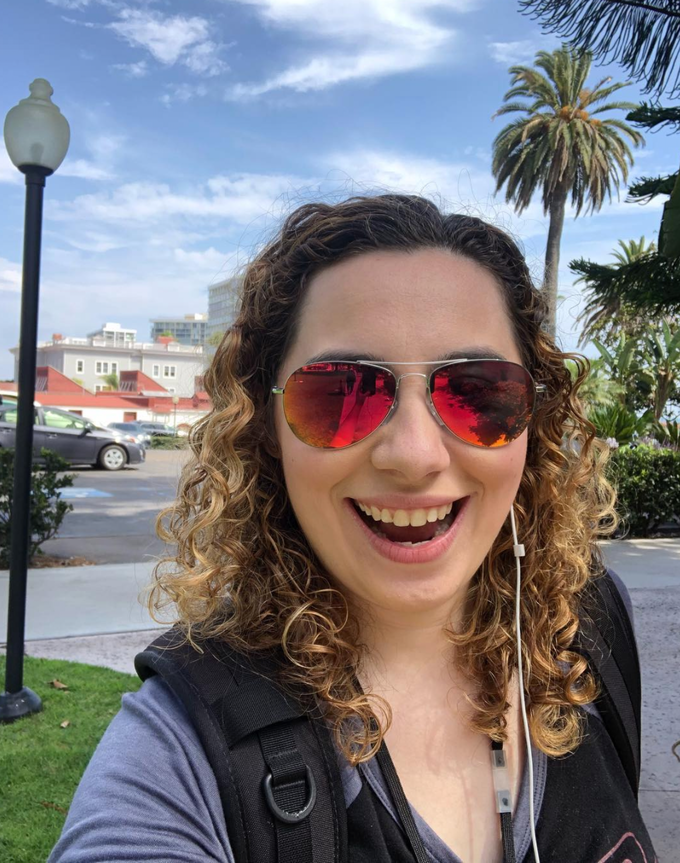Swamp Thing: Twin Branches uses monsters as a metaphor for finding yourself
Meet Walker Holland, Alec's twin brother in Swamp Thing: Twin Branches
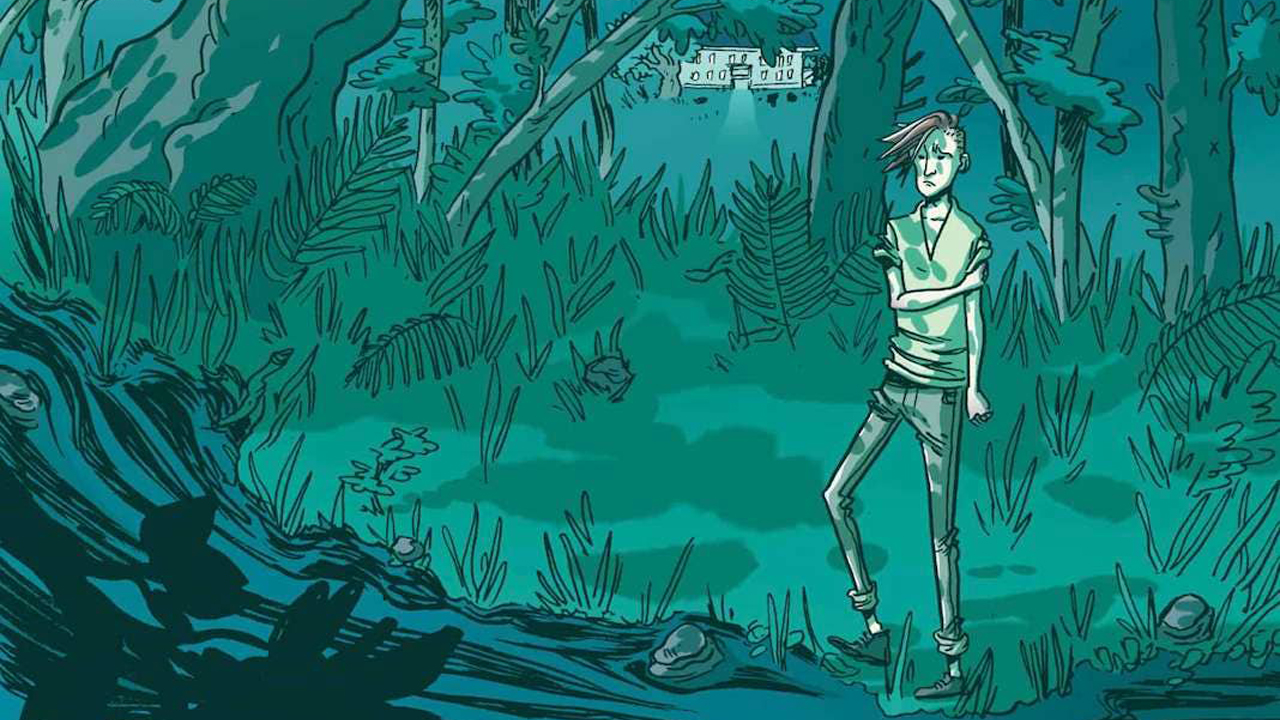
The upcoming graphic novel Swamp Thing: Twin Branches re-imagines DC's green man for all-ages audiences a la Goosebumps and Scary Stories to Tell in the Dark, but they're also adding new elements: namely, an identical twin brother named Walker, who is Alec's complete opposite.

Prose novelist Maggie Stiefvater (The Raven Cycle) and artist Morgan Beem (The Family Trade) are using this tale of twins to delve into the concept of identity and finding yourself with Swamp Thing: Twin Branches.
Stiefvater and Beem spoke with Newsarama ahead of Swamp Thing: Twin Branches' October 13 debut, discussing the idea of giving Alec Holland a twin brother, adapting Swamp Thing's unique brand of horror for a Young Adult audience, and other DC characters they'd be interested in working on now that this book is complete.
Newsarama: Maggie and Morgan, Swamp Thing is usually geared for a more mature audience with the character's horror elements. From an art and writing perspective, how did you approach Swamp Thing: Twin Branches for a Young Adult readership?
Maggie Stiefvater: I write books that are crossovers anyways. All of my books have been read recently by older teens and right up to what is kind of that amorphous zone that's called 'Young Adult' now - readers that are in their college years and early 20s that don't really have a shelf that's designated for them.
For me, I actually think Swamp Thing is a beautiful fit for that. A lot of comics are about exploring identity, who you are, and what it means to be one's self. In that sense, I think that Swamp Thing is an easy mash-up with a young teen audience. It didn't feel like you're having to stretch or dumb it down because they're asking these questions to themselves already.
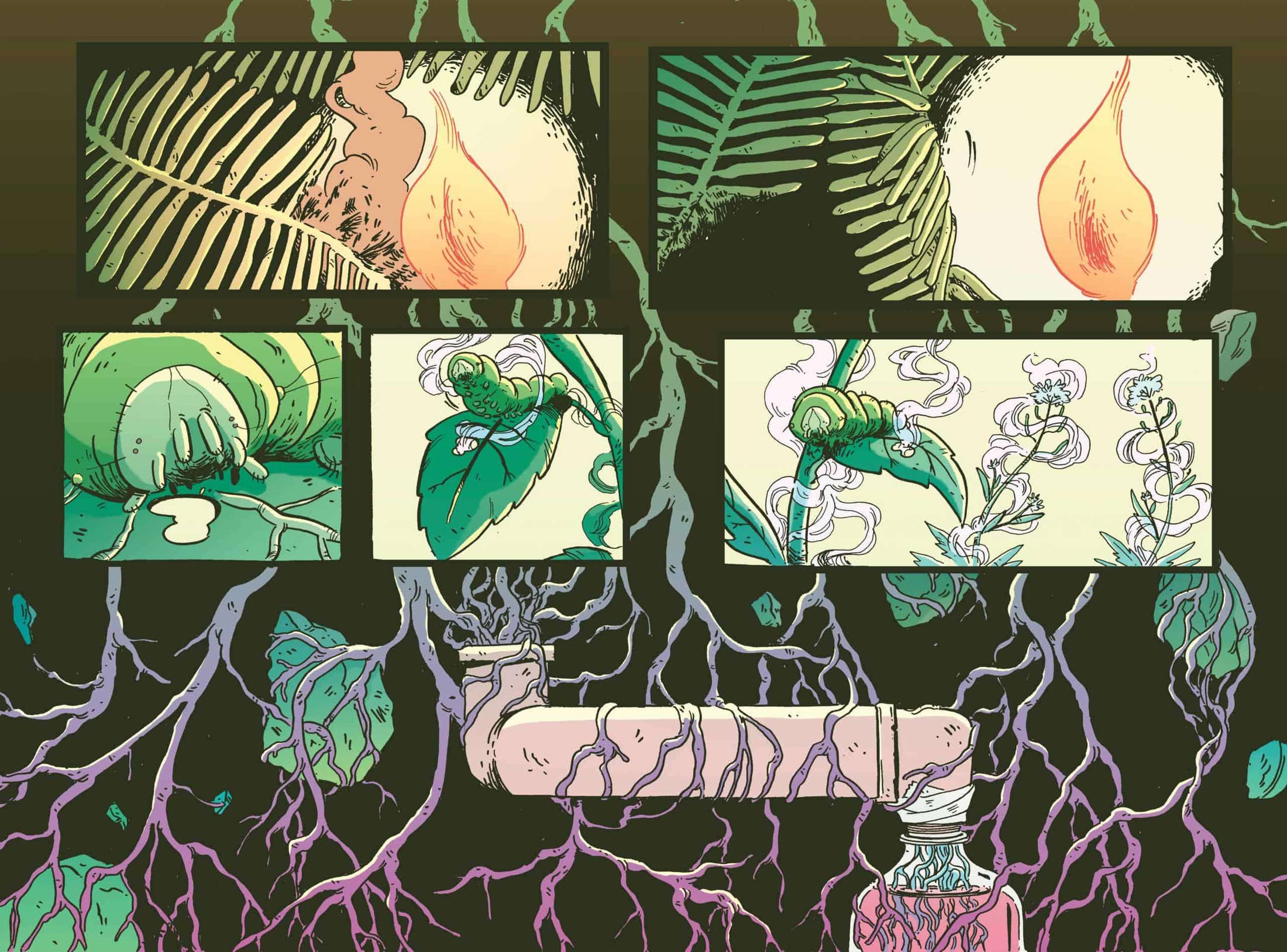
Morgan Beem: I think a lot of times horror gets put in this very adult genre, which can definitely be true of overly graphic or gory horror. But I think horror can be such an excellent vehicle, especially visually, for like what Maggie was saying - questions of self and identity, especially monster/body.
Get the best comic news, insights, opinions, analysis and more!
I remember when I was younger growing up on Goosebumps and Scary Stories to Tell in the Dark - technically horror stories geared at children and younger audiences.
Echoing what Maggie said, I think Swamp Thing is a good character and property to strike a chord with a younger audience. It's kind of an all-ages audience, right? Young Adult isn't necessarily tiny kids or anything as it talks about just sort of like life and transformative moments.
Nrama: What made you want to work on Swamp Thing?
Stiefvater: They offered me my pick of any DC character when I was looking at the pile of DC toys that I could do. I was thinking that there's a choice between picking a character that everybody loves, which brings a lot of expectations, and then there are characters that haven't been played with as often, which means that there's more room for interpretation.

I weighed this in my mind and then I thought, you know what? I really want to explore this intersection of science, magic, biology, and just nature in general because that's a theme that I use in my long works and Swamp Thing just does that really beautifully. It also lets me play with the toys in a way that I think Swamp Thing hasn't been dealt with as much as many of the other characters, which means people come with fewer preconceived notions of it.
Beem: Swamp Thing isn't your classic superhero, right? He's not your fit, attractive human who is loved by the town and saving it. Oftentimes, he speaks more for nature, almost against humanity. He has this sort of monstrous appearance that he's taken on or absorbed in order to do what it is he needs to do.
I love like supernatural creepy things. This is my wheelhouse. Swamp Thing fit in really nicely with what my visual aesthetic is and what I like to work with. I was just really excited to try and explore the character further.
Nrama: Maggie, as a prose novelist what made you want to work with the comic book medium?
Stiefvater: I had actually always loved not just graphic novels, but illustrated novels, which is a totally different animal entirely. One of my absolute favorite illustrated novels is Shaun Tan's The Arrival. And I recommend it to everyone that I meet since it first came out. That Christmas, I bought a case of it and everyone got a copy.
The thing that I love about Shaun Tan's work and this work, in particular, is that the entire thing is a word list, a massive illustrated novel about the experience of being an immigrant. He tells it beautifully through a paranormal speculative fiction metaphor where everywhere you go its alien plants and trees, and that's exactly what it feels like when you're moving to a new place where you don't speak the language and it's so effective to have that visual media.

It feels so sad to me that so many young adults and adults think that illustrated books are no longer for them and that they're the stuff for children. I love that right now we're having this moment where graphic novels, illustrated novels, and animation are getting to be all ages once again. I was really excited to try to write and adapt for that medium.
Nrama: What made you want to make Swamp Thing: Twin Branches star two characters - twins, Alec and Walker Holland?
Stiefvater: I really wanted Swamp Thing to be about identity, about what it means to feel out of place, to feel like you can't communicate with other people. You don't know anything about your own body, everything is changing. So, I made a couple of tweaks to the character. I made Alec a type one diabetic because my husband is a type one diabetic and my father is a type one diabetic. So, I felt like I was surrounded by these examples.
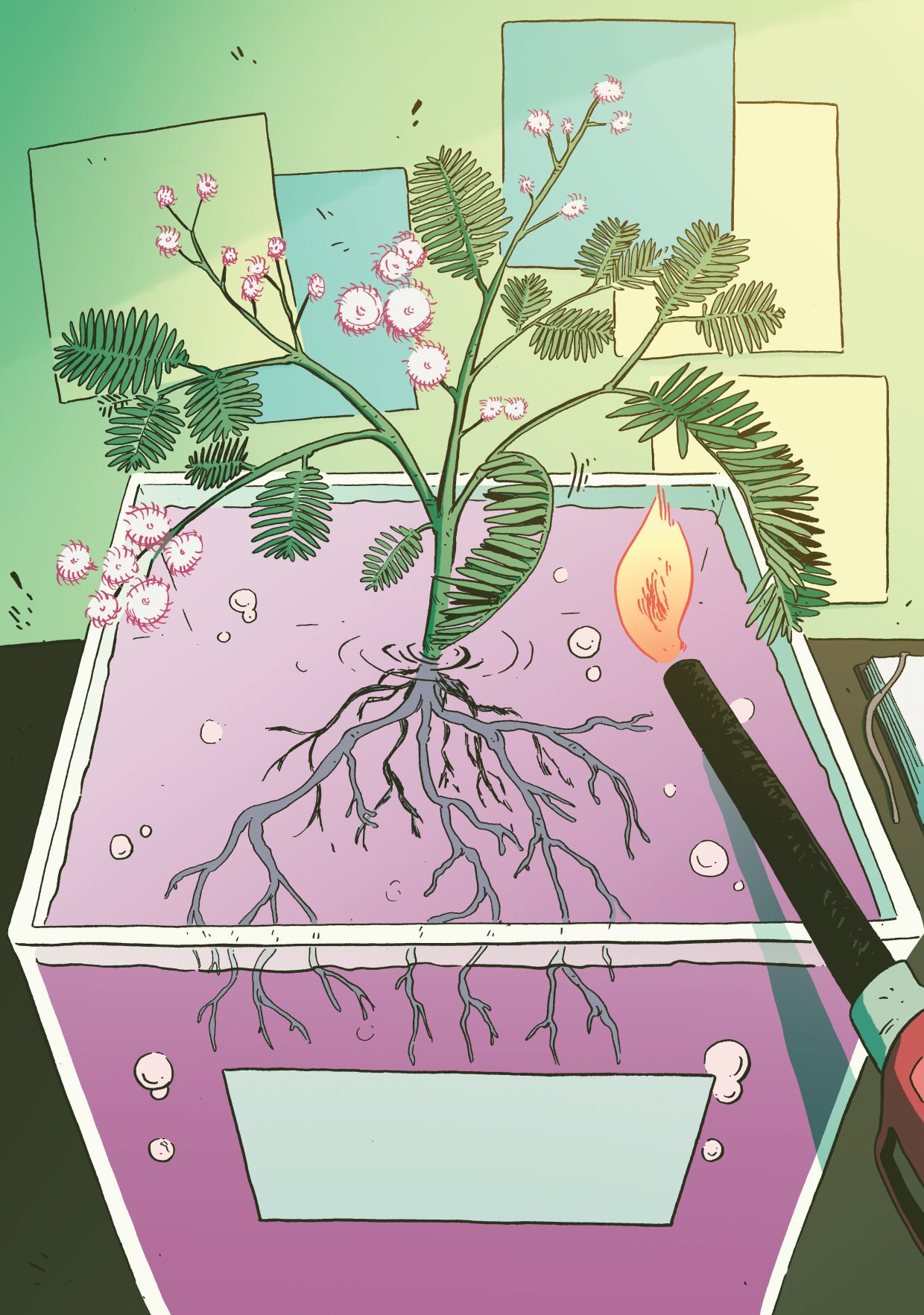
I also gave him a twin because I wanted him to not only feel like he didn't understand the changes his body was going through, but I also wanted him to increasingly see that he didn't understand how to communicate with himself or other people. He didn't know himself, and what better way to do that than to give him what he thinks is an identical version of himself. And, of course, a twin is not identical to you, they have their own experiences, but it feels that way with siblings. In Swamp Thing when we open the first page, they're already set to diverge that summer.
Nrama: Morgan, from an art perspective, how did you want to make the twins distinguishable?
Beem: One thing that's always really important to me when it comes to character designs, especially with younger characters who are still sort of figuring themselves out in our present world, it's to think about fashion, right?
Especially in high school and your twenties - every choice you make about how your style, your hair - even if they're non-choices, says a lot about where you're at in your life and maybe who you're trying to be while you're figuring out who you are.

That's the fun thing with twins. That you have the same things. A little bit different builds. Especially because Walker is the more outgoing one and is a little bit more athletic. I tried to put him a little bit more bulked up, more time in the sun where Alec is a little bit skinnier, paler. Something Maggie actually wrote in the script as well is a distinct hipster vibe for Alec. He's very meticulous. He cares a lot about his appearance. His clothes are always fitted and a little bit more well thought out, strategic outfits, which was really fun to do.
It was fun to think about accessories and how things would pair together. Like there's one point where they're eating ice cream and Alec pulls out an old-timey handkerchief, which again I think Maggie wrote in her script. It's just those kinds of little things.
Walker is a very happy go lucky, carefree guy. So, mostly it's just jeans and t-shirts, things that are available that will make him look very at ease and natural. He's not putting a lot of fuss or time into them because he's much more comfortable in his own skin.
So, through that and in storytelling by exuding their body language in much the same way. Alec is generally arms crossed, shoulders slumped. A little bit more closed off, trying to make himself smaller, trying to retract from people. Where Walker is big hand gestures, face to the sky, constantly more open.

Stiefvater: Which was an impossible task. I didn't even think about it when I first started, like let's make two characters who are perfectly identical for this artist - that won't be tough.
Nrama: What was your favorite part about drawing in this world?
Beem: Oh man, I had so many parts. It was just really fun. I love character acting. It's one of my favorite things about being a visual storyteller is thinking about if you're talking on the phone or if you're at a party, how people stand and how you gesture and what that says about you. The nice thing about this book is that it's about exploring your own identity and your own self and how you respond and how you adapt to changing situations, changing people.
We had lots of opportunities to draw party scenes or characters interacting with other people to show a lot of emotion through character acting, body language, and facial expression. Then, of course, the body horror element is another one of my favorites. I love thinking of creature designs and taking subtle things and trying to make them a little bit creepier, both with shot calls, framing, and the actual design itself.
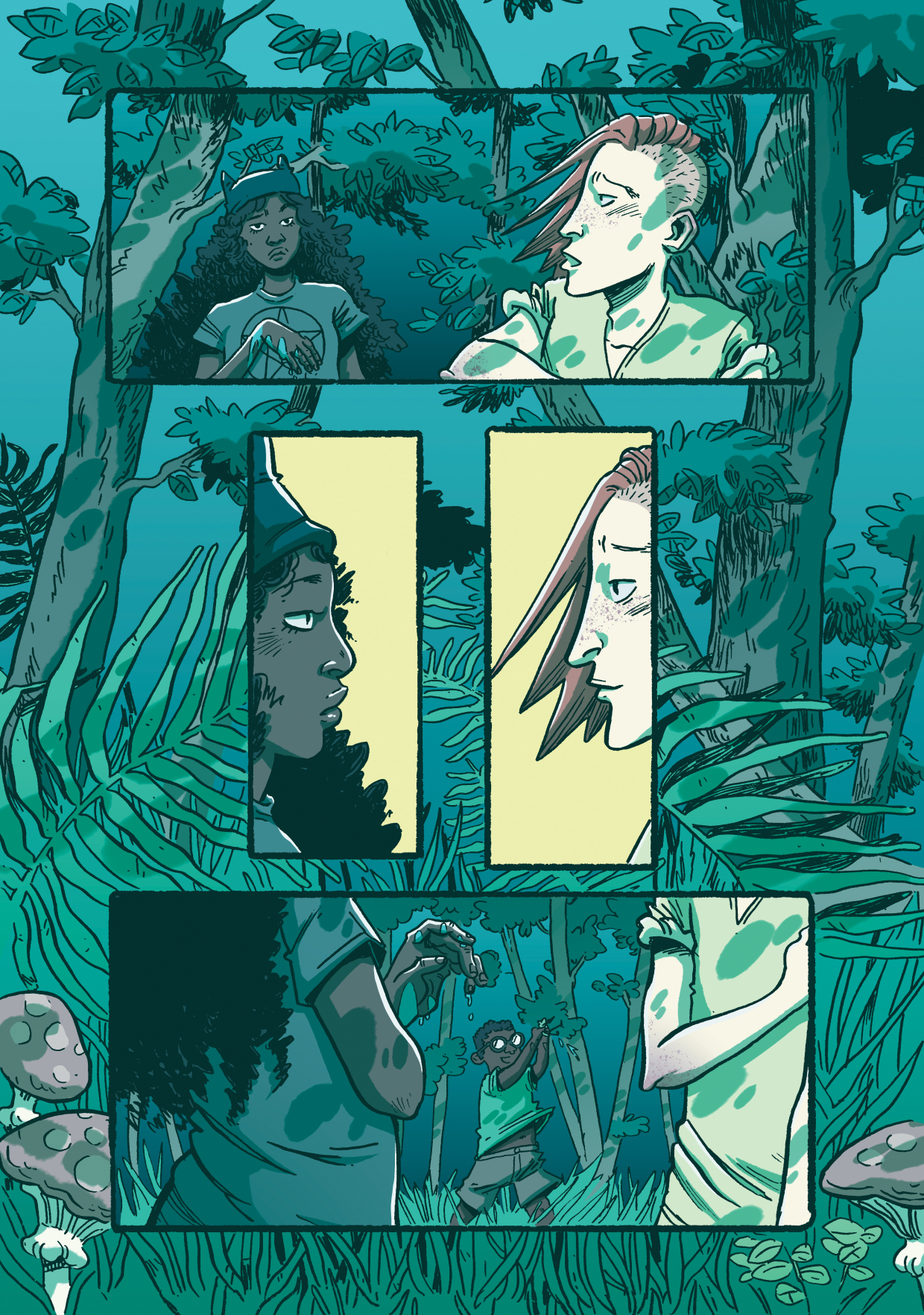
Nrama: We've learned a bit about Alex and Warren, but what can you tell us about the supporting characters?
Stiefvater: There are a ton of them. This is a problem I have is that I like to add side characters to solve every problem I have so I actually cut many side characters.
I really enjoyed putting in the mentor figure in the lab. I feel like in YA we don't get an opportunity to have adults that know what they're talking about and actually get to disseminate with them and understand what teens are going through because we want the teens to be solving their own problems. So, it's always satisfying to feel like you've pulled off successfully the hat trick of having an adult that actually offers real information that is useful to them without solving the problems of the plot.
Nrama: For fans of Raven Cycle, what do you think they'll enjoy about your take on Swamp Thing?
Stiefvater: I can answer right away. I know that fans of the Raven Cycle right now really love the character, Adam Parrish, who has a connection with both magic and with plants, and I feel like they get to play in that world even more deeply with Swamp Thing for sure.

Nrama: To wrap, what other DC characters would you like to bring this YA approach to?
Beem: They've already done such a good job with so many of the characters. Like I loved the Mera book, they did that. So that definitely appeals to me in a great way that they've already really taken off on. The Teen Titans books have been fantastic - Catwoman, I think most of them are in the works that have been done.
Damian Wayne would be really fun to take into the DC YA, which I think they have already done or might be planning to do. But he's such a fun son of Batman spunky type character, who I think you can do a lot with. So, there's a lot of good characters to play with.
Stiefvater: I used to joke and always answer this question with Batman because who doesn't want to write about Batman, but I have to say having done this I think I wouldn't actually introduce anyone new. You already asked about side characters, Abby, who has a relationship with Alec and gets a twist with the magic at the end of this one. I feel like it would be fun to continue on. Rather than go wider and introduce more characters. Instead, it would be fun to go deeper.
Kat has been working in the comic book industry as a critic for over a decade with her YouTube channel, Comic Uno. She’s been writing for Newsarama since 2017 and also currently writes for DC Comics’ DC Universe - bylines include IGN, Fandom, and TV Guide. She writes her own comics with her titles Like Father, Like Daughter and They Call Her…The Dancer. Calamia has a Bachelor’s degree in Communications and minor in Journalism through Marymount Manhattan and a MFA in Writing and Producing Television from LIU Brooklyn.
